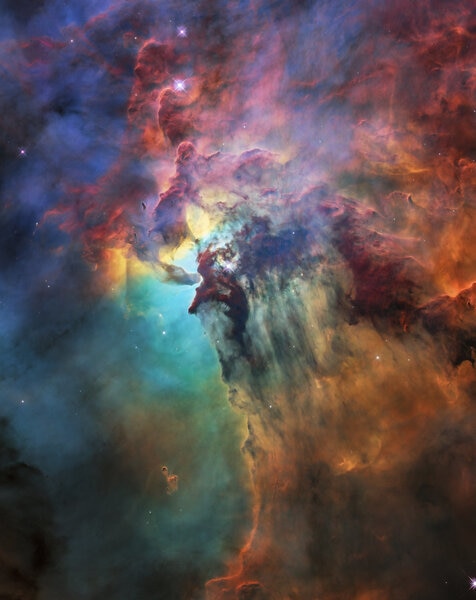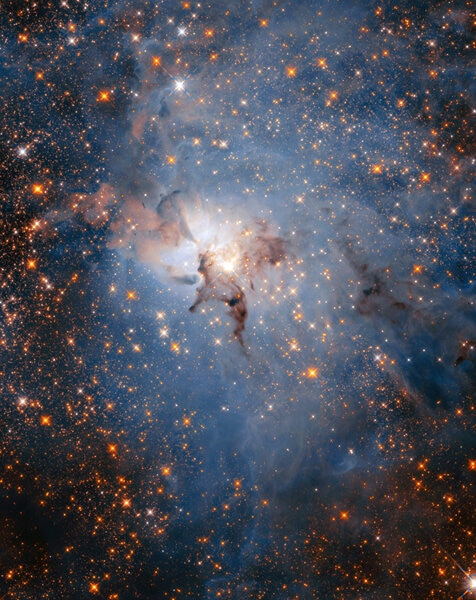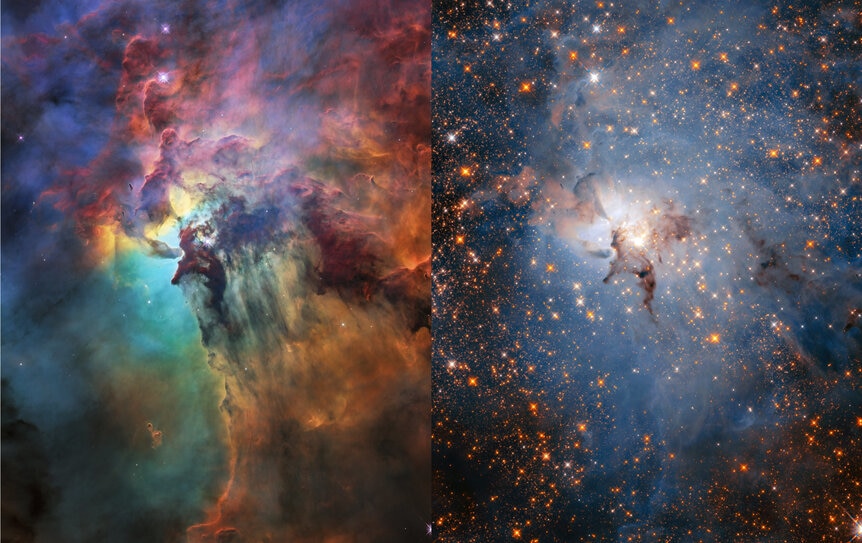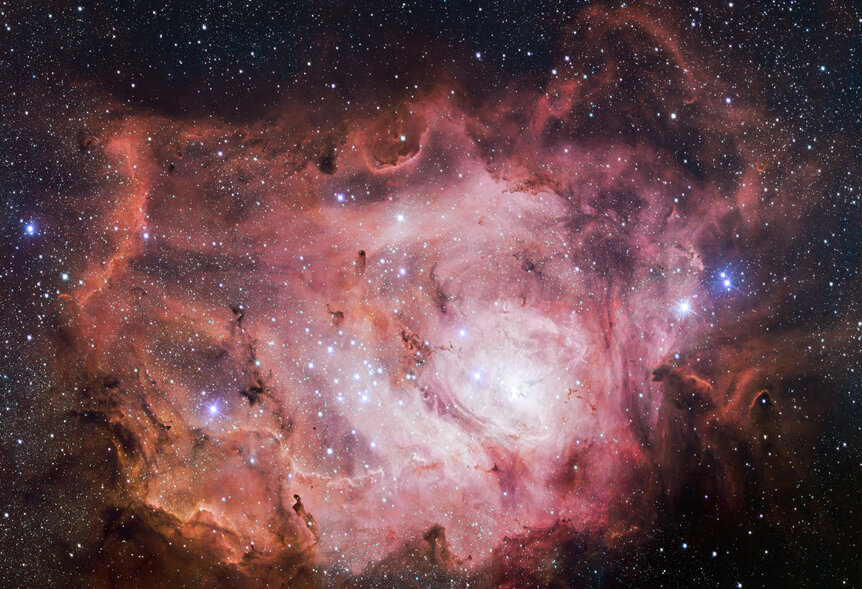Create a free profile to get unlimited access to exclusive videos, sweepstakes, and more!
Hubble’s 28th anniversary: Silt in the Lagoon
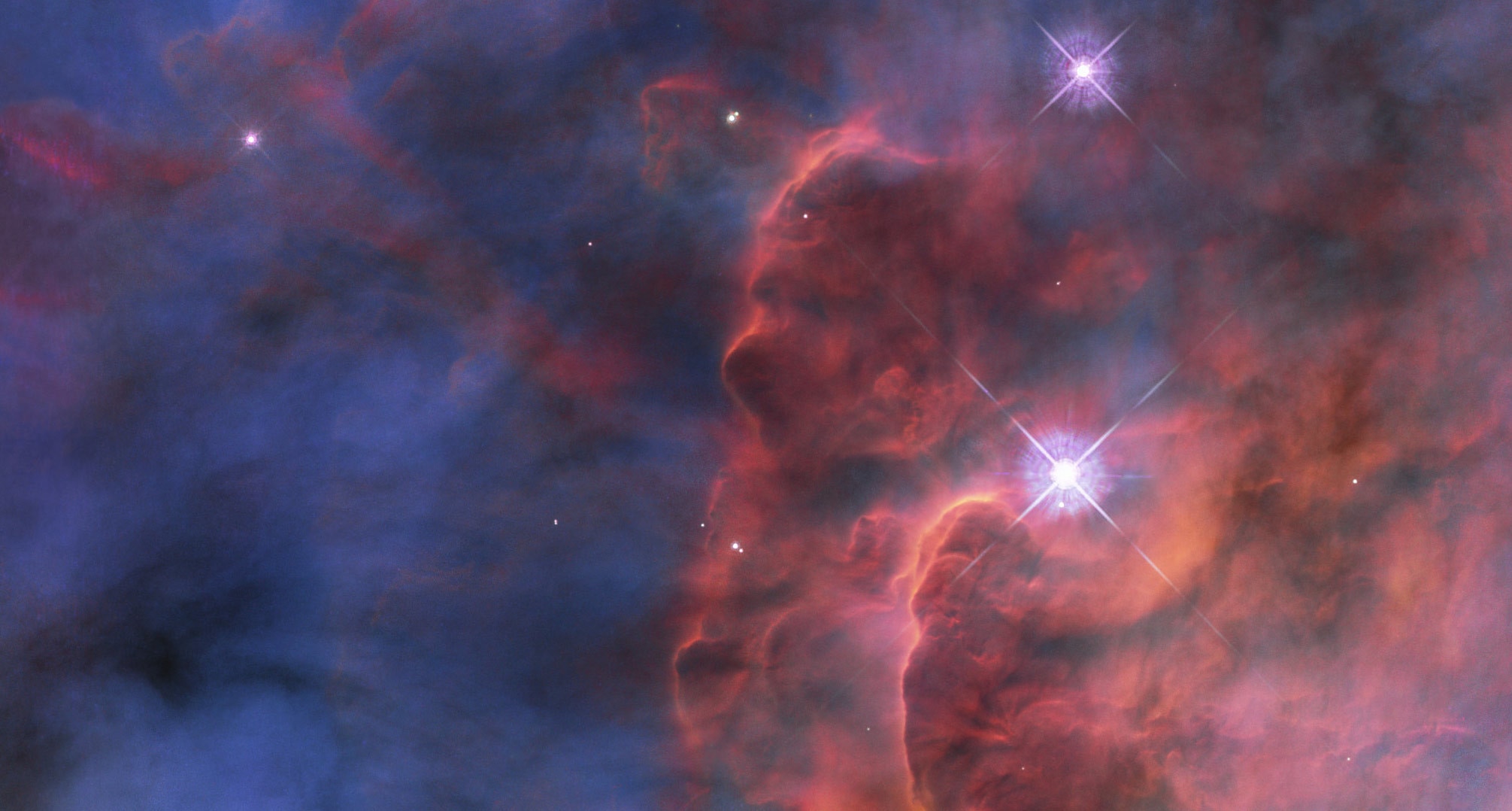
April 24, 2018, will mark the 28th anniversary of the launch of Hubble Space Telescope into orbit on board the Space Shuttle Discovery. It's fair to say that this observatory changed the way humans see the Universe, whether you are a professional astronomer or someone who just yearns to see the sky up close.
In honor of this milestone* — and as they do every year — the good folks working on Hubble released a stunner of an image. This time, it's a favorite of skywatchers around the planet: M8, also known as the Lagoon Nebula:
Oh, yeah. The Lagoon is a gigantic cloud of gas and dust about 4,000 light-years away. At that distance, you'd need a powerful telescope to see the Sun at all, yet the Lagoon is visible (barely) to the unaided eye from a dark site! It's an easy object to spot using binoculars, and I always amuse myself when I sweep that area of the sky and it falls into view — it's bright enough to jump right out of the background miasma of the dense population of stars in that region of Sagittarius.
Through a telescope the kidney bean-ish shape is obvious, with an off-center knot of bright gas and a loose cluster of stars next to it (see below). Those stars are young, having been born from the gas surrounding them. The Lagoon is still cranking out stars… a lot of them. It's a vast 100 light-years wide (four times the diameter of the more famous Orion Nebula), and the most massive of those stars are so luminous they energize that gas, which glows in a characteristic hydrogen-red.
Hubble's field of view is not (easily) up to the task of imaging such a huge area of the sky, but wow, what it does see! The image above shows a section of it about four light-years wide, which is still a lot of real estate. The star in the middle is called Herschel 36, and it's a bruiser: It's a type O7 star, at the high end for mass and brightness, several thousand times more luminous that the Sun.
It blasts out so much ultraviolet light that it's sculpting the surround gas. You can see lots of ridges in the nebula, dark billowy structures with bright edges. Those are where the dust is thicker, and the radiation from Herschel 36 is eating away at them. They all are aligned, pointing at the star; that's because in a sense they're like sandbars in a stream. The star is eroding them!
One thing that really surprises me about this image is the lack of stars in it. The Lagoon is situated toward the center of the Milky Way from our point of view, which is like the downtown part of a city. It's where most of the action is in terms of stars and nebulae. Scanning that area with binoculars reveals thousands of stars! So where are they?
Well, the center of the galaxy is about 26,000 light-years way, and the Lagoon is much closer than that. The thick dust is blocking our view, so we don't see many stars (I had to chuckle when I saw this image, given that I wrote about this topic literally just yesterday!).
I can prove it, too. The image above is using visible light, the kind our eyes can see. But Hubble can also detect infrared light, which penetrates the murk in the Lagoon. And it just so happens an image of the Lagoon using IR was released for Hubble's anniversary as well!
Aha! Look at all those stars! These stars are shrouded from our sight in visible light, but in the infrared we can see right through the nebula to the stars beyond. Most of them look red because the dust is better at absorbing and scattering bluer (shorter wavelength) light, letting longer wavelengths through. This infrared image is mapped sort of like a visible light image, with longer wavelengths displayed as red and shorter as blue.
It's interesting to compare the two. I had to shrink them to fit here, but there they are side by side:
The bright dense ridges and features so obvious in the visible light image are ghosts in the infrared, and only the very thickest dust can be seen in both. The small knots to the upper left of Herschel 36 are where new stars are being born as well, surrounded by very thick material. These protostars will soon turn on, blowing off their cocoons and adding their light to the beacons already shining there.
Let me leave you with this: a shot of the entire bright part of the nebula, taken by the Very Large Telescope Survey Telescope, an instrument roughly the same size as Hubble, but with a much larger field of view.
Just to the lower right of center is a very bright patch of nebulosity. That's where the Hubble image is centered. Herschel 36 and the surrounding gas are so bright they're overexposed in the image and washed out. But you can trace some of the other stars in both shots, and it gives you a sense of both how detailed the Hubble image is, and how flippin' huge the Lagoon is. Our Sun — the brightest object in our sky by far — would be lost in those stars.
The Universe is big. I'm glad Hubble is still up there taking a close look at it.
*I wonder, sometimes, if the U.S. ever goes metric, how long it will take this term to fade away. But kilometerstone is an awful word and isn't historically accurate anyway.
